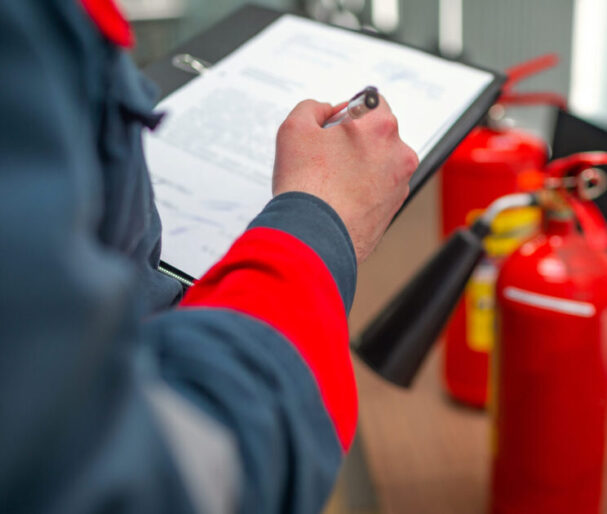Fire safety is a critical part of your maintenance plan. Along with threatening the safety of your staff and visitors, the risk of fire creates the possibility of expensive costs for repair and replacement, along with loss of income and work stoppage. Commercial building fires cost businesses about 155 million dollars in damage per year, so protect your staff, your building, and your assets with a fire safety plan and practices in place.
As you work to protect your teams and your business, here are some of the ways you can up the fire safety in your building as part of your regular maintenance plan:
- Studies show that 18 per cent of fires originate with electrical or lighting systems, and eight per cent from heating equipment, so assessing these systems regularly and performing recommended maintenance and repairs will help reduce the risk of fire from these locations.
- According to the American Fire Sprinkler Association, sprinkler systems are the single most effective way of fighting the spread of fires in their early stages, so ensure that your sprinkler system is operational at all times, in case a fire breaks out.
- Check with your local fire code. Look at the requirements for fire alarms, doors, and fire extinguishers to ensure that you are compliant in providing the maximum amount of safety for your building.
- Reports show that the most common safety fire violations in commercial buildings include blocked exit doors, faulty emergency exit lighting, untested fire alarms and smoke detectors, missing fire extinguishers, not keeping proper records, and more. Ensure that you avoid these violations with regular testing and inspection of these areas.
- Create designated smoking areas to keep smoking contained to one location. If you have flammable chemicals on site, consider abolishing smoking on the premises altogether to maximize safety.
- With hazardous chemicals or materials, store them properly and practice safe disposal to reduce the risk of fire and explosions. Follow all manufacturer directions for safe storage and disposal.
- Train your teams and conduct routine safety drills to ensure that your staff knows what to do in case of an emergency. Train staff on the procedures for maintaining fire safety equipment, along with the locations of fire exits and emergency protocols, should a fire occur.
Prioritizing fire safety means adding it to your regularly scheduled maintenance. As you check for equipment failure and budget for repairs and replacement, assessing and correcting fire safety measures will significantly reduce the risk of fire in your building.









